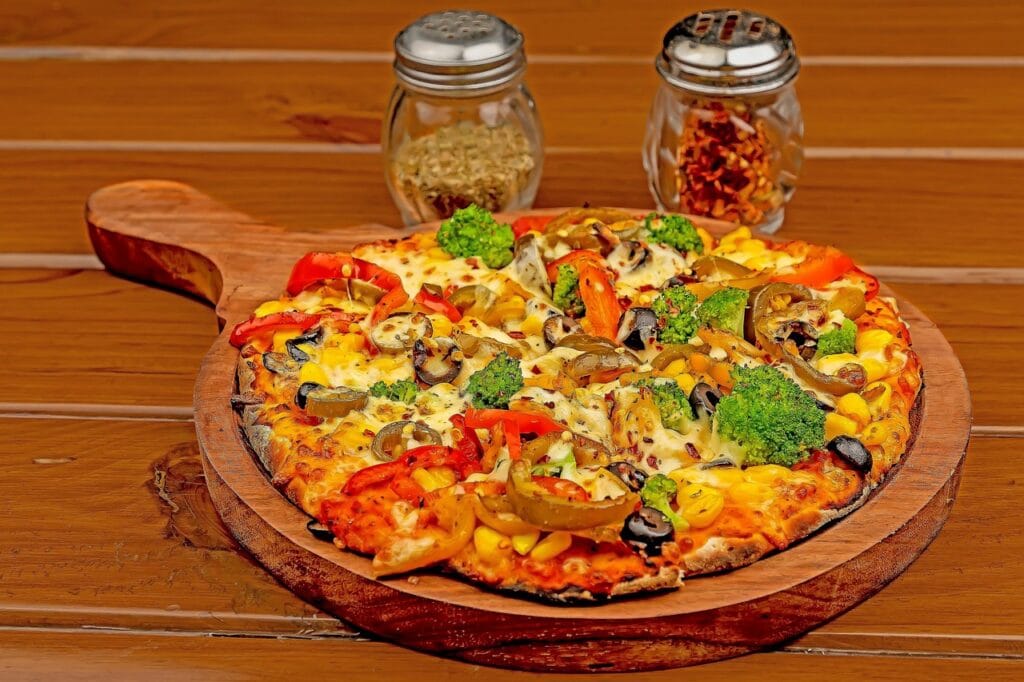
Food trends, much like fashion and entertainment, possess a peculiar cyclical nature. What was once a staple, gracing every dinner table and celebrated at every gathering, can quietly ebb and flow, only to fall out of favor as Americans’ tastes evolve. Sometimes, these once-beloved dishes make a triumphant return, often fueled by modern marvels like social media. Other times, they simply fade into the annals of culinary history, leaving behind a trail of nostalgia for those who remember them.
Our collective culinary preferences are not static; they are constantly shaped by a fascinating blend of health consciousness, technological advancements, shifts in grocery store offerings, and even broader societal changes. The journey from widespread popularity to near-obscurity is a common one for many foods, reflecting how deeply our eating habits are intertwined with the world around us. Think about it: why visit a soda parlor when a McDonald’s is just around the corner? These shifts are more profound than they first appear.
Join us on a delectable trip down memory lane as we uncover 15 iconic American foods that have largely disappeared from our daily diets. We’ll explore their rise to fame, the intriguing reasons behind their decline, and what they tell us about American culture. Prepare to be surprised, perhaps a little nostalgic, and certainly hungry for knowledge, as we begin our exploration with the first seven of these fascinating culinary relics.

1. **Jell-O Salad**In the vibrant culinary landscape of the 1950s, Jell-O salad was an unmistakable fixture at dinner parties across America. These elaborate molded creations often incorporated an eclectic mix of ingredients, from whipped cream and pineapple to mini marshmallows, transforming simple gelatin into a dazzling centerpiece. It was a testament to domestic artistry and a beloved treat, showcasing a playful approach to meal preparation that defined an era.
Yet, this jiggly marvel’s reign was surprisingly short-lived. By the mid-1970s, the popularity of Jell-O salads had crashed so dramatically that several flavors were discontinued entirely. What was once a symbol of ingenuity and celebration became a culinary curiosity, leaving many to wonder how such a beloved item could fall so swiftly from grace.
Their decline can be directly attributed to a significant societal shift: the rise in women joining the workforce in larger numbers. With less time for labor-intensive kitchen endeavors, demand grew for quicker and simpler meal solutions, rendering molded gelatin masterpieces increasingly impractical. Today, most younger Americans have never experienced the polarizing textures of a lime Jell-O, cottage cheese, and canned pear concoction, a dish that now serves as a quirky reminder of a bygone culinary age.
Read more about: Step Back in Time! 14 Jaw-Dropping Pictures That Prove the 1950s Were Totally Wild and Way Cooler Than You Think

2. **Cottage Cheese**Cottage cheese, heavily marketed as a slimming food throughout the 1970s and well into the 1990s, saw its consumption increase rapidly across the United States. During this period, per capita consumption reached approximately 4.6–5.3 pounds annually, firmly establishing it as a popular dietary staple for many health-conscious Americans. It was a go-to snack, celebrated for its versatility and protein content, fitting perfectly into the prevailing wellness narratives of the time.
However, its fortunes took a sharp turn. Statista reports that by the early 2020s, the figure declined to about 2 pounds of cottage cheese per person per year, representing a significant drop of as much as 58%. This dramatic fall from grace marked a period where cottage cheese seemed destined for permanent obscurity, overshadowed by newer, trendier alternatives that captured the public’s imagination.
The yogurt industry played a direct role in cottage cheese’s decline, with its superior taste, smoother texture, and more charming marketing successfully captivating consumers. Yet, ironically, cottage cheese has slowly made a resurgence, propelled by social media influencers on platforms like TikTok and Instagram. Americans have rediscovered this high-protein food’s incredible versatility, from viral recipe hacks like cottage cheese ice cream to its use in diverse culinary applications, proving that sometimes, even faded foods can find a new lease on life.
Product on Amazon: Vacation Strawberry Jello Salad SPF 30 Lip Balm, Hydrating Sunscreen for Lips, Water-Resistant, Lightweight, Transparent Sheen, Vegan Formula Made without Beeswax (Pack of 3)
Brand: VACATION
Binding: Health and Beauty Product Group: Beauty
Price: 12 USD
Rating: 4.1 Total reviews: 390
Item Form: Stick
Sun Protection: 30 SPF
Skin Type: All
Color: Strawberry Jello Salad
Shopping on Amazon >>
Read more about: Cracking the Code: Can Diabetics Safely Enjoy Watermelon? Your In-Depth Guide to Fruit and Blood Sugar Management
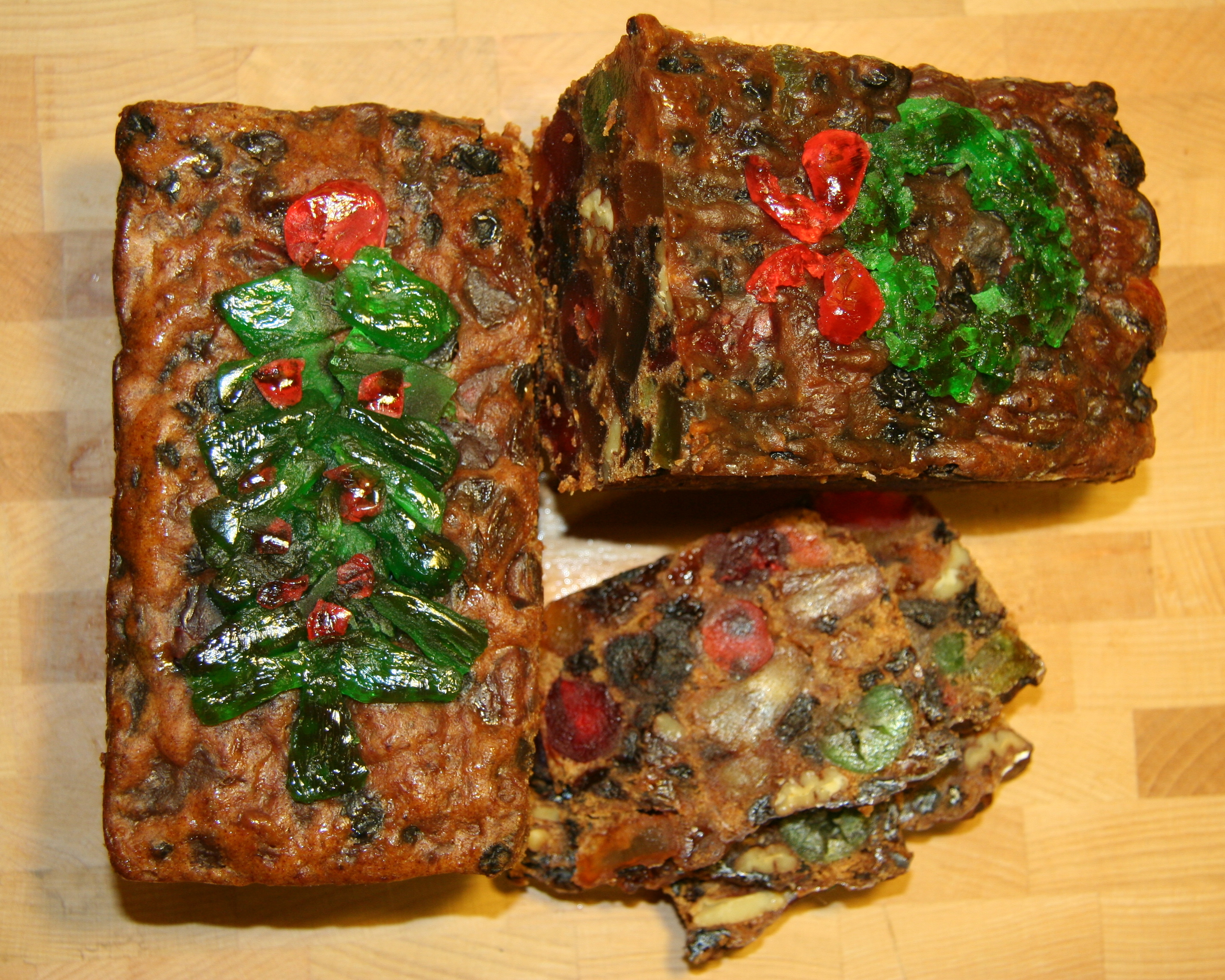
3. **Fruitcake**The dense, boozy fruitcake, studded with candied fruits and nuts, was once a cherished centerpiece of American celebrations. Families would devote entire afternoons to the meticulous assembly and baking of these festive treats, or place orders with specialty bakeries months in advance, underscoring its significant role in holiday traditions and gatherings. It was a labor of love, a symbol of seasonal indulgence, and an eagerly anticipated part of the holiday spread.
However, the fruitcake’s once-unquestioned position at the heart of American celebrations has waned considerably. A recent Mashed survey revealed that 43% of participants chose fruitcake as the holiday dessert they’d least like to see at a Christmas party, making it the most disliked dessert in the ranking. This dramatic shift highlights a profound change in popular tastes and a growing aversion to what was once a holiday delight.
The decline in fruitcake’s popularity can be attributed to changing tastes that favor lighter, less intensely sweet desserts. Moreover, it has unfortunately earned a reputation as the quintessential unwanted gift, often regifted for years on end, and has become the subject of countless jokes. This comedic association, coupled with evolving palates, has relegated the once-beloved fruitcake to a nostalgic curiosity rather than a culinary essential.
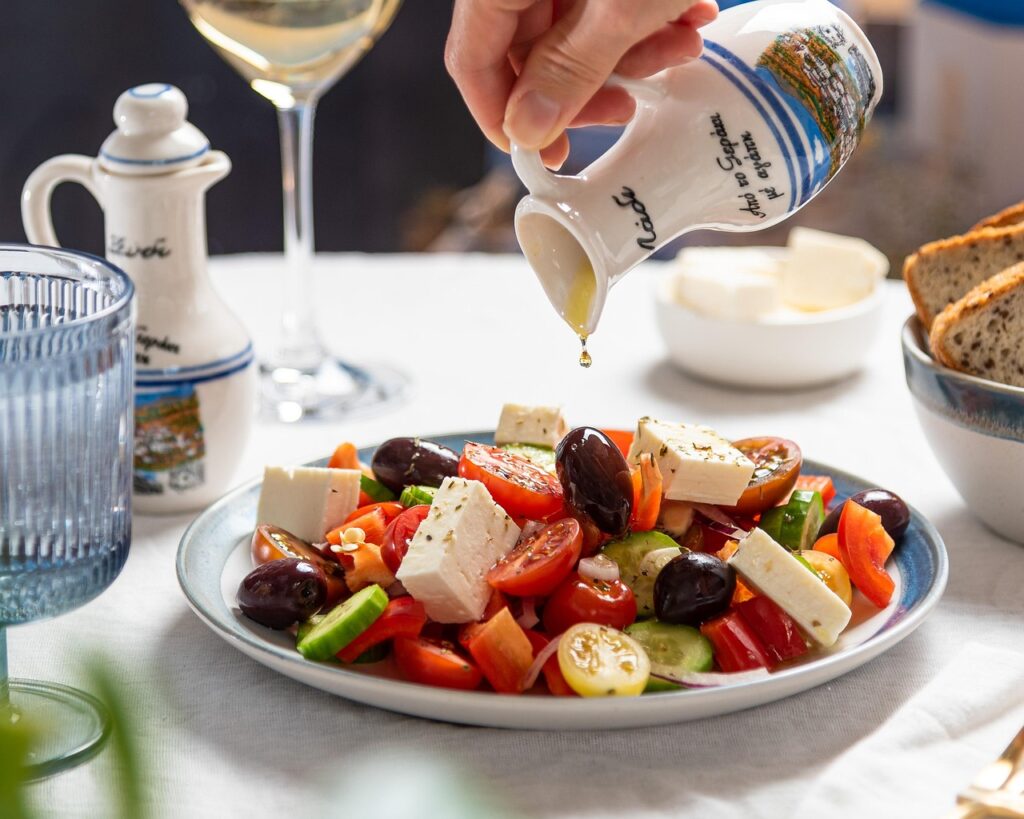
4. **Ambrosia Salad**Ambrosia salad, with its vibrant combination of citrus, coconut, and marshmallows, was once a colorful Southern potluck mainstay. This impressive treat, often set before dinner guests, was considered a delightful and sophisticated addition to any meal. Its name, “ambrosia,” derived from Greek origin, even translates as “food of the gods,” reflecting the high regard in which it was held for its unique and appealing blend of flavors and textures.
For a considerable period, this fruit salad remained immensely popular, largely because coconut and citrus were considered luxuries for most Americans. The exotic appeal of these ingredients, combined with the dish’s sweet and refreshing qualities, made ambrosia a standout item that symbolized indulgence and celebration. It was a dish that promised a taste of the finer things, making it a staple at various gatherings.
Today, however, ambrosia salad is primarily visible only at Thanksgiving and Christmas feasts, marking a significant decline in its everyday popularity. While it still evokes a sense of tradition and nostalgia for some, its regular presence on American tables has diminished considerably. Modern preferences for fresher, less sweet, and simpler fruit preparations have shifted the spotlight away from this once-revered, marshmallow-laden concoction, making it a seasonal rarity rather than a year-round favorite.
Product on Amazon: Old Fashion Claxton Fruit Cake 3-1 Lb. Regular Recipe Loaves – Individually Wrapped For Freshness in our Signature Red-White Carton – 3-pack
Brand: Claxton Fruit Cake
Binding: Unknown Binding Product Group: Grocery
Price: 24.95 USD
Rating: 4.5 Total reviews: 17003
Flavor: Regular Recipe
Item Weight: 3.4 Pounds
Unit Count: 48.0 Ounce
Number of Items: 3
Package Weight: 1.61 Kilograms
Package Information: Box
Number of Pieces: 1
UPC: 073652310018
Melting Temperature: 35 Degrees Celsius
Features:
1. Timeless Tradition: Savor Old Fashion Claxton Fruit Cake, a global favorite since 1910. Renowned for old-fashioned goodness and holiday charm, we’re proud to be the “Choice of Millions.”
2. Elegantly Wrapped: Contains 3 – 1 lb dark recipe cakes. Each one-pound cake comes individually wrapped for freshness and presented in our signature red-and-white striped carton.
3. Freshness You Can Trust: Store in the fridge and unwrap your cake just before eating to experience the perfect flavor and ultimate freshness.
4. Premium Ingredients: Our dark recipe cakes boast over 70% choice fruits and nuts like California raisins, pineapple, papaya, pecans, cherries, walnuts, almonds, and citrus peel.
5. Versatile Delight: Ideal for holidays, gatherings, or daily indulgence, our fruit cakes are a treat for any occasion. Enjoy them alone, with a beverage, or as a unique festive addition.
Shopping on Amazon >>

5. **Liver and Onions**Once a common and hearty meal, liver and onions has largely disappeared from restaurant menus across America. This culinary shift is primarily due to younger generations expressing a strong disinclination to order or consume it. The robust, distinctive flavors and unique texture of liver, once embraced for its nutritional value, now often present a challenge to modern palates, leading to its quiet removal from the mainstream dining experience.
This trend is tied to a general aversion among younger people toward liver and other offal, despite liver being widely recognized as one of the most nutritionally dense foods available. For many contemporary diners, the prospect of consuming organ meats is simply unappetizing, contrasting sharply with historical dietary practices where such parts of an animal were regularly consumed for sustenance and flavor.
Interestingly, while liver and onions rarely features in modern American meal choices—be it breakfast, lunch, or dinner—the global demand for beef liver tells a different story. According to Research Nester, the global beef liver market was valued at approximately USD 5.4 billion in 2024 and is projected to grow to USD 15.03 billion by 2037, with a robust compound annual growth rate (CAGR) of 7.7%. This international trend suggests that while Americans may have turned their backs on this particular dish, the nutritional and culinary appeal of liver persists in other parts of the world.
Read more about: Forget What You Thought: Why Motor City Pizza’s Reign Isn’t Ending, It’s Just Getting Started!

6. **Aspic and Savory Gelatin Salads**In the first half of the 20th century, the ability to serve shimmering towers of gelatin containing an array of vegetables, meats, or seafood was considered a huge status symbol at dinner parties. These elaborate aspic and savory gelatin salads were not merely food; they were a performance, demonstrating the host’s culinary skill and sophistication. The intricate visual appeal and the delicate, wobbly texture made them a conversation starter and a true showstopper.
Indeed, aspic and savory gelatin salads were a hot trend during that era, signifying one’s sophistication and access to modern conveniences. At a time when only a small percentage of the population had electricity in their homes, let alone refrigerators and freezers, the creation and presentation of these chilled, molded dishes highlighted a household’s affluence and modernity. They were a testament to progress, embodying a futuristic vision of cuisine that captivated diners.
However, as culinary tastes evolved towards simpler, more natural flavors and health consciousness grew, these intricate gelatin molds began to lose their appeal. Modern preferences lean towards less processed foods, and the unique, often challenging texture of savory gelatin became a deterrent for many. Consequently, what was once a symbol of high society and modern living has faded into obscurity, becoming a quirky relic predominantly rediscovered by adventurous cooks for retro-themed events.
Product on Amazon: French’s Original Crispy Fried Onions, 24 oz – One 24 Ounce Bag of Crunchy Fried Onions to Sprinkle on Salads, Potatoes, Chicken, Burgers and Green Bean Casseroles
Brand: French’s
Binding: Grocery Product Group: Grocery
Price: 9.12 USD
Rating: 4.7 Total reviews: 7642
Features:
1. EXCEPTIONAL FLAVOR, TEXTURE AND COLOR: Made with whole, carefully sourced globe onions, Frenchs Original Crispy Fried Onions deliver versatile flavor, exceptional texture and a beautiful golden color
2. HIGH QUALITY ONIONS: Americas top product for crispy onions, Frenchs onion topping will add a satisfying crunch to any recipe; premium onions sealed for maximum freshness and flavor
3. MADE FOR CHEFS: Chefs can add the ideal amount of crunch to signature dishes with Frenchs 24-ounce bag of fried onions; cut down on preparation time with pre-made Frenchs Fried Onions
4. VERSATILE: Sprinkle on burgers, chicken, potatoes and salads for delicious texture and a punch of flavor; onion topping complements all kinds of classic dishes and new menu items
5. FEEL GOOD INGREDIENTS: Kosher, vegetarian and free from high fructose corn syrup, dairy and GMOs; embellish your recipes with crispy fried onions you can feel good about serving
Shopping on Amazon >>
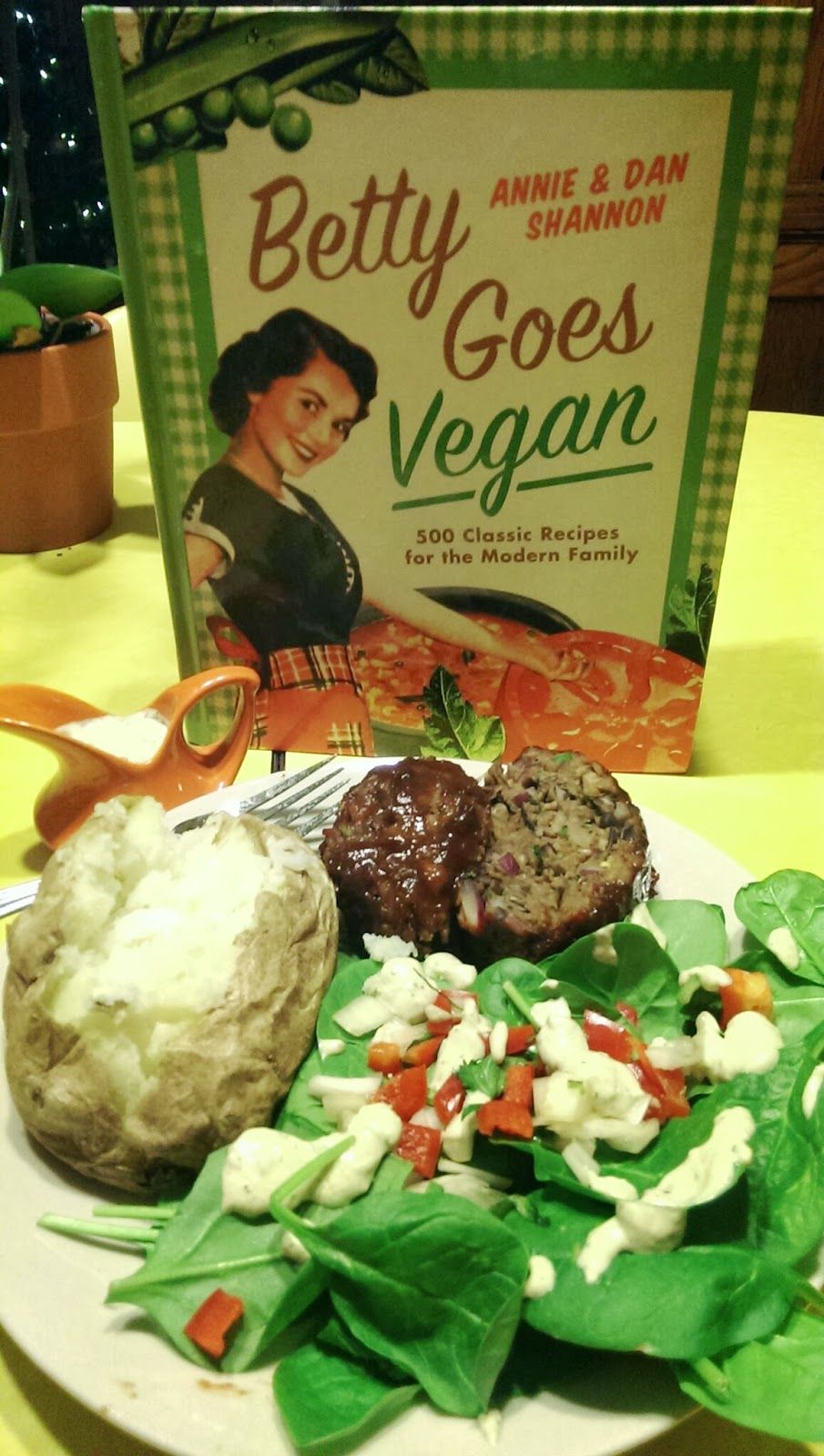
7. **Meatloaf**Meatloaf, a ground beef and breadcrumb concoction, once served as the weekly centerpiece that allowed families to make a small amount of pricey meat last for several days. It was an economical and comforting dish, a staple of home cooking that provided a hearty meal without breaking the bank. This versatile dish offered a practical solution for stretching resources, embodying the frugality and resourcefulness of past generations.
In recent decades, however, red meat consumption, particularly beef, has decreased significantly in the United States. According to USDA data, Americans consumed about 89 pounds of red meat per capita in 1976, a figure that has since seen a notable decline. This shift in dietary habits, driven by evolving health consciousness and a desire for more diverse protein sources, has naturally impacted the prominence of meatloaf on dinner tables.
The classic meatloaf has gradually been replaced by a far wider variety of options than were available in previous generations. Today’s supermarkets and culinary landscapes offer an abundance of choices, from various poultry and fish dishes to plant-based alternatives, reducing meatloaf’s role as a primary go-to meal. Although restaurants in the United States continue to offer meatloaf as part of their menus, it is increasingly becoming a relic of a bygone era, cherished more for its nostalgic value than as a contemporary culinary staple.
Having journeyed through the initial seven forgotten favorites, our culinary expedition continues, delving into eight more fascinating American dishes that, for various reasons, have largely vanished from our everyday tables. These foods, each with its unique charm and history, offer a window into past eras of American dining, revealing how profoundly our collective palate and lifestyle have transformed. Prepare to uncover the stories behind these intriguing culinary relics, from hearty casseroles to peculiar regional delicacies, and discover why they’ve become mere whispers in the grand narrative of American food.
Product on Amazon: Stouffer’s Family Size Meatloaf Frozen Meal
Brand: Stouffer’s
Binding: Grocery Product Group: Amazon Fresh Perishables
Price: 7.99 USD
Rating: 4.5 Total reviews: 2460
Package Information: Box
Number of Items: 1
Flavor: Meatloaf
Item Weight: 33 Ounces
Features:
1. SERVE UP COMFORT WITH EVERY BITE Gather around the table with your loved ones when you serve Stouffer’s Family Size Meatloaf. It’s a delicious dish that will turn dinnertime into a joyful moment SNAP and EBT Eligible item
2. CRAFTED WITH QUALITY YOU CAN TASTE Stouffer’s frozen dinners are thoughtfully crafted with flavorful, quality ingredients. Our oven roasted meatloaf is made with beef and pork, and topped with homestyle beef gravy
3. COOK IN THE OVEN OR MICROWAVE Bake the frozen meatloaf dinner in the oven for 65 minutes. Or cook in the microwave for 18 minutes
4. SOLVE DINNER DREAD When the recipe has 20 ingredients and the clock strikes dinner, think Stouffer’s. Whether you’re looking for after-work dinner ideas, or you need some easy comfort food, this meatloaf frozen dinner is the perfect way to solve your ‘what’s for dinner?’ dilemma
5. FAMILY SIZE PORTION With about 6 servings of this meatloaf dinner, you can keep the whole family happy and satisfied. Take boring and bland foods off the dinner table
Shopping on Amazon >>
Read more about: Beyond the Stars and Stripes: Unmasking the Surprising International Roots of 15 ‘All-American’ Foods

8. **Tuna Noodle Casserole**Few dishes evoke the cozy, comforting essence of post-war American dining quite like the tuna noodle casserole. This staple of practicality and resourcefulness, a true midweek hero for many families, found its footing in an era where canned goods and economic meals were paramount. It was a hearty, inexpensive, and incredibly easy-to-assemble dish, perfectly suited to busy households and tighter budgets. The creamy blend of canned tuna, egg noodles, and often canned cream of mushroom soup, topped with a crunchy layer, symbolized domestic bliss for a generation.
However, the tides of public opinion began to turn against this once-beloved casserole. Its reliance on heavily processed ingredients, particularly canned tuna and canned cream of mushroom soup, became a significant drawback as American consumers grew increasingly health-conscious. The distrust of processed foods in general, coupled with mounting concerns over mercury levels in tuna, began to erode its widespread appeal. This shift reflected a broader movement towards fresher, more natural, and minimally processed ingredients, which left the casserole feeling decidedly old-fashioned.
Indeed, the decline of tuna noodle casserole is directly linked to the falling sales of its key ingredient: canned tuna. U.S. tuna sales have plummeted by almost 40% since the mid-1980s, effectively dragging this foundational casserole out of the culinary mainstream with it. What was once a budget-friendly, convenient meal has become a rarity, found mostly in nostalgic cookbooks or recreated by those yearning for a taste of their childhood. It serves as a stark reminder of how evolving dietary preferences and health concerns can redefine an entire food category.
Read more about: Unlock the Secrets: Your Ultimate Guide to Pairing Wine with Beloved Comfort Foods

9. **Salisbury Steak (Frozen)**The Salisbury steak, particularly its frozen TV dinner incarnation, once represented the epitome of modern convenience and a quick, satisfying meal for the average American household. Named after Dr. James Salisbury, who advocated for ground beef patties in brown gravy as a nutritious and practical meal solution, it became a go-to for busy weeknights and a symbol of mid-century American dining. These pre-packaged meals, complete with their compartmentalized trays, promised a complete dinner with minimal effort—a true marvel for its time.
Yet, this frozen dinner icon has experienced a significant decline in sales over the last decade. The American Frozen Food Institute reports that between 2010 and 2020, the entire frozen meal category saw a downturn. This shift wasn’t isolated to Salisbury steak; it was part of a larger consumer migration. Americans began gravitating towards fresher, organic, and more health-conscious alternatives, signaling a departure from the processed, often sodium-heavy options that once dominated the freezer aisle.
The decline of Salisbury steak can also be attributed to an evolving palate, with modern tastes leaning towards more gourmet, internationally inspired, or simply lighter frozen meal options. Consumers now seek variety and quality that often surpasses the simple, gravy-laden patties of yesteryear. While still available, the frozen Salisbury steak has largely been relegated to the back of the freezer, a nostalgic relic overshadowed by a new generation of convenient, yet more sophisticated, culinary choices.
Product on Amazon: Stouffer’s Tuna Noodle Casserole Frozen Meal
Brand: Stouffer’s
Binding: Grocery Product Group: Amazon Fresh Perishables
Price: 0.25 USD
Rating: 4.3 Total reviews: 1855
Package Information: Box
Number of Items: 1
Flavor: Tuna
Item Weight: 12 Ounces
Features:
1. DELICIOUS BITES FOR SOLO NIGHTS You’ll love every bite of Stouffer’s single serve Tuna Noodle Casserole. Make dinnertime a joyful moment with homestyle food SNAP and EBT Eligible item
2. CRAFTED WITH QUALITY YOU CAN TASTE Stouffer’s tuna noodle casserole is thoughtfully crafted with flavorful, quality ingredients, made with freshly made egg noodles, tuna, mushrooms, celery & peas in a creamy sauce
3. SOLVE DINNER DREAD When the recipe has 20 ingredients and the clock strikes dinner, think Stouffer’s. Whether you’re looking for after-work dinner ideas, or you need some easy comfort food, this tuna noodle casserole is the perfect way to solve your ‘what’s for dinner?’ dilemma
4. SINGLE PORTION Take boring and bland foods off the table with our single serve tuna casserole. It’s a dish you can look forward to on any night of the week
5. COOK IN THE OVEN OR MICROWAVE Bake the tuna casserole in the oven for 45 minutes, or cook it in the microwave for 7 minutes
Shopping on Amazon >>

10. **Fondue**Fondue, with its charming communal pot and an air of sophistication, was once a celebrated cornerstone of American entertaining, particularly in the 1970s. This interactive dining experience, where guests gathered to dip morsels of bread, meat, or fruit into a simmering pot of cheese or chocolate, became synonymous with elaborate dinner parties and social gatherings. It was not merely a meal; it was an event, fostering conversation and camaraderie around a shared, delicious centerpiece. The fondue pot itself was a must-have wedding gift, symbolizing a modern and hospitable home.
Fondue, with its charming communal pot and an air of sophistication, was once a celebrated cornerstone of American entertaining, particularly in the 1970s. This interactive dining experience, where guests gathered to dip morsels of bread, meat, or fruit into a simmering pot of cheese or chocolate, became synonymous with elaborate dinner parties and social gatherings. It was not merely a meal; it was an event, fostering conversation and camaraderie around a shared, delicious centerpiece. The fondue pot itself was a must-have wedding gift, symbolizing a modern and hospitable home.
However, the once-ubiquitous fondue pot has become a scarce sight in most American homes today. The popularity of home fondue-making saw a steady decline throughout the 2000s, a direct result of changing social habits. Fewer people are now hosting elaborate dinner parties that require guests to spend hours over a single pot. Modern entertaining often favors quicker, less involved preparations, or a more diverse array of individual dishes, rendering the time-consuming and somewhat specialized nature of fondue less appealing.
Consequently, fondue has largely transformed into a nostalgia piece. The fondue pot itself is now often considered a retro novelty rather than an essential kitchen appliance. While fondue can still be purchased in most supermarkets and through third-party retailers, its role has shifted from a mainstream entertaining essential to a charming, occasional indulgence, perhaps for a themed party or a special, intimate gathering. It serves as a sweet (or savory) reminder of a more leisurely, communal approach to dining that has largely given way to contemporary preferences.
Read more about: Nearly a Decade Behind the Scenes at Longhorn Steakhouse: Secrets, Hacks, and What I Learned

11. **Baked Alaska**Baked Alaska, a dessert celebrated for its dramatic hot-cold contrast and impressive presentation, was once considered the magnum opus for home cooks eager to dazzle their dinner party guests. This exquisite creation requires a delicate balance of skill, involving the cooking and freezing of multiple components before the grand finale: torching the meringue topping directly at the table. Its theatrical flair and sophisticated preparation made it a true showstopper, embodying the pinnacle of culinary artistry for special occasions.
Despite its undeniable elegance, Baked Alaska has drifted into obscurity, becoming an increasingly rare sight on American menus. According to Tastewise, only a minuscule 0.04% of restaurants currently offer this intricate dessert. Its decline can be largely attributed to the technical difficulties and labor required to create it. In an age where kitchens prioritize efficiency and simpler preparations, the sheer investment of time and skill makes it impractical for most establishments and home cooks.
This movement away from fussy, over-the-top desserts in favor of something simpler or less of a production has further sealed Baked Alaska’s fate. While its dramatic presentation still wows, the practicality of modern dining has favored more straightforward sweet endings. For those willing to invest the time and effort, recreating this classic is not just baking; it’s an act of culinary history, a delicious and theatrical nod to a bygone era of elaborate dessert spectacles.
Product on Amazon: Emmi Swiss Fondue, 14 oz
Brand: Emmi
Binding: Grocery Product Group: Amazon Fresh Perishables
Price: 0.89 USD
Rating: 4.6 Total reviews: 563
Number of Items: 1
Unit Count: 14.0 Ounce
Variety: Swiss
Item Form: Solid
Features:
1. Origin: Switzerland
2. Milk Type: Cow
3. Yes
4. Pre-mixed Swiss cheese blend with brandy and kirsch
5. Warm on the stovetop or microwave for instant, authentic fondue
Shopping on Amazon >>
Read more about: The Digital Witness: An In-Depth Examination of Livestreamed Crimes and Their Unsettling Societal Impact
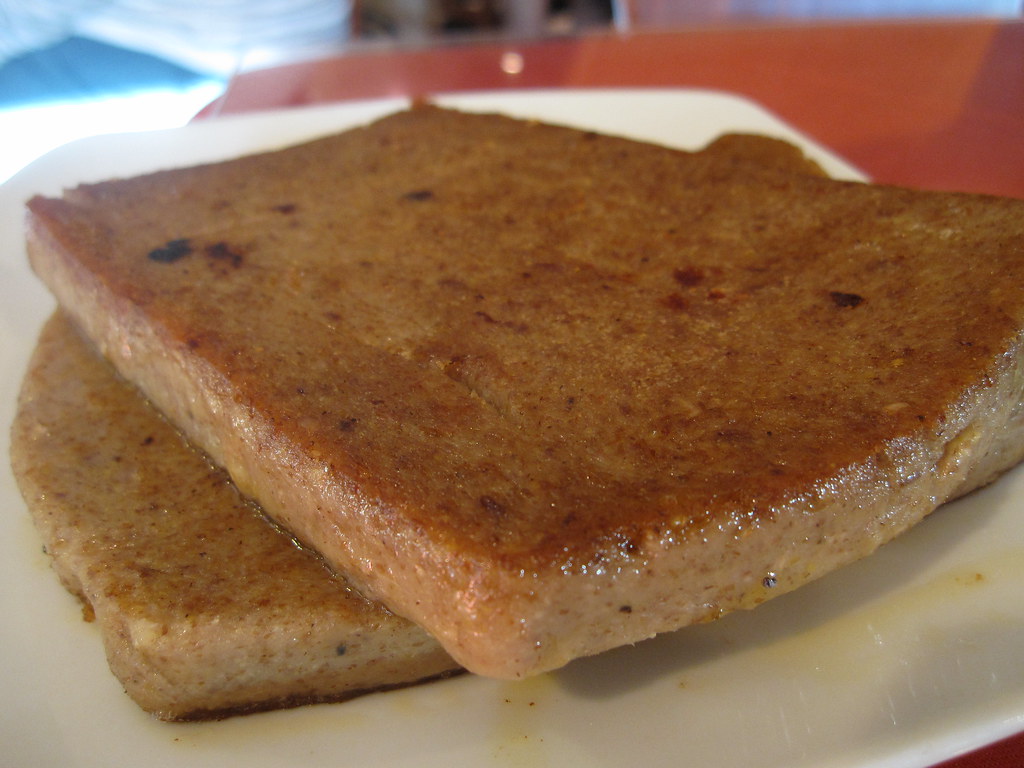
12. **Scrapple**Hailing from Pennsylvania Dutch country, scrapple is a unique and decidedly thrifty culinary creation. This mash of pork trimmings, cornmeal, and flour was originally conceived as an ingenious way to utilize every part of the pig, transforming what might otherwise be discarded into a filling and economical breakfast sausage. It was a testament to the resourcefulness of past generations, offering a hearty and substantial start to the day, deeply rooted in a culture that valued sustainability and minimizing waste.
However, despite its historical significance and practical origins, grocery store sales of scrapple have steadily decreased since 2000. This decline reflects a broader shift in modern American dietary preferences and an increasing disconnect from traditional, nose-to-tail eating practices. The very pig parts that go into its creation—trimmings and offal—are not particularly appetizing to the modern eye, which has unfortunately given scrapple a challenging reputation among contemporary consumers.
Consequently, this Pennsylvania Dutch delicacy, once a regional staple, has been largely abandoned by modern Americans. While it still holds a cherished place in the hearts of those familiar with its heritage and unique taste, its robust flavor and less-than-glamorous ingredients have made it a niche item rather than a mainstream breakfast choice. Scrapple stands as a poignant example of how changing perceptions of food, driven by aesthetic and societal preferences, can lead a culturally significant dish to fade from widespread popularity.

13. **Rocky Mountain Oysters**The aptly (or perhaps controversially) named Rocky Mountain oysters, more commonly known as testicle fries, were once a surprisingly prevalent dish in certain American regions. Historically, particularly during resource-scarce periods like the Great Depression and World War II, organ meats played a central role in the American diet. These were practical, economical, and often deeply ingrained in the culinary traditions of rural and farming communities, where using every part of an animal was a necessity and a point of pride.
However, with the rapid industrialization of the postwar era and the advent of large-scale meat production, consumer habits began to change dramatically. Americans increasingly favored more conventional cuts of meat, moving away from offal. This shift, combined with younger generations growing disconnected from the traditions of eating organ meats and the small, family-run farms that depended on them, led to a significant decline in the popularity of Rocky Mountain oysters.
Today, these once-popular dishes have become increasingly rare, largely relegated to novelty menus at specific regional festivals or specialty restaurants catering to adventurous eaters. The modern American palate, accustomed to more standardized and less challenging textures and flavors, has largely turned its back on this unique delicacy. Rocky Mountain oysters serve as a vivid illustration of how economic shifts, industrialization, and evolving cultural norms can profoundly alter a nation’s dietary landscape, moving once-common foods to the fringes.
Product on Amazon: Habbersett Scrapple 1 Lb. (6 Pack)
Brand: Habbersett
Binding: Misc. Product Group: Grocery
Price: 69.95 USD
Rating: 4.6 Total reviews: 1349
Number of Items: 6
Item Weight: 7 Pounds
Size: 1 Pound (Pack of 6)
Number of Pieces: 6
Features:
1. Six 1 pound blocks
2. The scrapple will have a minimum 14 day Best By window upon arrival
3. A Philadelphia Favorite since 1863
4. A Guaranteed 14 day minimum Best By date window upon delivery.
Shopping on Amazon >>

14. **Fried Brain Sandwich**For a period in the early 20th century, the fried brain sandwich held a curious popularity, particularly as a Midwest specialty served in eateries across the country. This dish, often featuring thinly sliced calf brains, breaded and fried, offered a unique texture and flavor profile that appealed to a segment of the American dining public. It was a testament to a different era of culinary adventurousness and a more comprehensive approach to consuming animal products, before modern sensibilities largely shifted away from organ meats.
However, the once-common fried brain sandwich has since become little more than a historical relic, with very few places still offering it today. The primary catalyst for its dramatic decline was the widespread fear surrounding ‘mad cow disease’ (Bovine Spongiform Encephalopathy), a neurological disorder linked to consuming the brains of infected cows. This health scare had a direct and devastating effect on public confidence in consuming animal brains, leading to a rapid and almost complete abandonment of the dish.
Beyond the specific health concerns, broader shifts in culinary preferences have also contributed to its disappearance. The general aversion to offal among younger generations, as well as a preference for less confronting and more conventionally appealing meat dishes, has ensured that the fried brain sandwich remains firmly in the past. It stands as a stark and cautionary tale of how public health concerns and evolving tastes can swiftly and decisively remove a once-popular food from the national diet.
Read more about: Beyond the Stars and Stripes: Unmasking the Surprising International Roots of 15 ‘All-American’ Foods

15. **Eel Pie**Eel pie, a classic comfort dish with deep roots, was once “all the rage” in the late 19th and early 20th centuries in several American areas. Its popularity was particularly strong in port cities or regions with sizable British and Dutch immigrant communities, who brought their traditional eel pie recipes with them to America. This savory pie, featuring tender eel in a rich sauce encased in a flaky crust, was a hearty and flavorful meal, a cherished part of the culinary heritage of these communities.
The key to its widespread acceptance was the availability and cultural familiarity with eel itself. In certain coastal and riverine areas, eel was a common and accessible food source, and the pie offered a comforting, familiar way to prepare it. It was a dish that spoke of home, tradition, and robust flavors, providing sustenance and a sense of belonging for immigrant populations adapting to a new land, while also finding favor with broader American tastes.
However, eel pie has gradually faded into obscurity in America for a variety of reasons. Chief among these are changing dietary preferences, which have largely moved away from the consumption of eel and other less common aquatic foods. Additionally, shifts in the origin of immigrants over the decades have meant that fewer new arrivals brought with them the culinary traditions that kept eel pie alive. Today, it exists as a rare culinary footnote, a nostalgic echo of a time when the American palate was more diverse and deeply connected to localized foodways.
Product on Amazon: Funny Stockyard Diner Fried Brain Sandwiches T-Shirt
Brand: Fried Brain Sandwiches
Binding: Apparel Product Group: Apparel
Price: 14.99 USD
Rating: 5.0 Total reviews: 1
Shopping on Amazon >>
Read more about: Forget Filters! 14 Celebs Who Are PROOF That Aging Naturally is Totally Radiant, And What They Have to Say
As we conclude our gastronomic tour of these once-famous American foods, it’s clear that our dietary landscape is a living, breathing entity, constantly evolving and adapting. From the communal charm of fondue to the regional peculiarities of scrapple, each dish tells a story not just of flavor, but of economic shifts, cultural exchanges, technological advancements, and changing societal values. While some foods may stage a comeback, often aided by new trends and platforms like social media, others settle permanently into the annals of history, serving as fascinating reminders of how and what we once ate. What remains undeniable is the power of food to connect us to our past, offering a delicious, if sometimes challenging, taste of times gone by. The dishes we embrace, and those we let go, paint a vivid picture of who we are as a nation, reflecting our shifting priorities and our endless quest for what satisfies us, both on the plate and in life.



